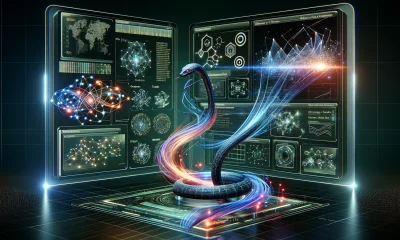Healthcare
Self-Learning Algorithm Can Predict Heart Failure

A new artificial intelligence (AI)-based computer algorithm that is able to identify subtle changes in electrocardiograms (ECGs) can predict when an individual is experiencing heart failure. The algorithm was developed at The Mount Sinai Hospital, and the research was published in the Journal of the American College of Cardiology: Cardiovascular Imaging.
Benjamin S. Glicksberg, PhD, is Assistant Professor of Genetics and Genomic Sciences, a member of the Hasso Plattner Institute for Digital Health at Mount Sinai, and a senior author of the study.
“We showed that deep-learning algorithms can recognize blood pumping problems on both sides of the heart from ECG waveform data,” said Glicksberg. “Ordinarily, diagnosing these type of heart conditions requires expensive and time-consuming procedures. We hope that this algorithm will enable quicker diagnosis of heart failure.”
New Opportunities With AI
Doctors have traditionally used an echocardiogram, which is an imaging technique, to assess whether a patient is experiencing heart failure. However, these are labor-intensive and only offered at some hospitals.
AI is creating new opportunities in this regard, with research suggesting that electrocardiograms could be an effective alternative. Recent research has indicated that a deep learning algorithm can detect weakness in the heart’s left ventricle. The new research out of Mount Sinai describes the development of an algorithm that assesses the strength of the left ventricle as well as the right.
Girish N. Nadkarni, MD, MPH, CPH, is Associate Professor of Medicine at the Icahn School of Medicine at Mount Sinai, Chief of the Division of Data-Driven and Digital Medicine (D4M), and senior author of the research.
“Although appealing, traditionally it has been challenging for physicians to use ECGs to diagnose heart failure. This is partly because there is no established diagnostic criteria for these assessments and because some changes in ECG readouts are simply too subtle for the human eye to detect,” said Dr. Nadkarni. “This study represents an exciting step forward in finding information hidden within the ECG data which can lead to better screening and treatment paradigms using a relatively simple and widely available test.”
Programming and Testing the Machine
The researchers programmed a computer to read patient ECGs and data extracted from written reports, with the latter acting as a standard set of data for the computer to compare with the ECG data. This enabled it to identify weaker hearts.
With natural language processing (NLP) programs, the computer could extract this data from the written words. At the same time, neural networks could discover patterns in images, which could then be incorporated into the algorithm to help it recognize pumping strengths.
“We wanted to push the state of the art by developing AI capable of understanding the entire heart easily and inexpensively,” said Dr. Vaid.
The machine analyzed 700,000 ECGs and echocardiogram reports, which came from four different hospitals. A fifth hospital was used to test how the algorithm would perform in a different experimental setting.
“A potential advantage of this study is that it involved one of the largest collections of ECGs from one of the most diverse patient populations in the world,” said Dr. Nadkarni.
The algorithm demonstrated an effective ability to predict which patients would have healthy or weak left ventricles, and it was 94 percent accurate at predicting which patients had a healthy ejection fraction, which is how much fluid the ventricle pumps out with each beat. The algorithm was also 87 percent accurate at predicting those who had an ejection fraction below 40 percent.
One of the areas still in need of work involves the prediction of which patients would have slightly weakened hearts. The algorithm only had an accuracy rate of 73 percent at predicting the patients who had an ejection fraction between 40 and 50 percent.
The algorithm could detect right valve weaknesses from the ECGs as well, with it reaching an 84 percent accuracy rate at predicting which patients had weak right valves.
“Our results suggested that this algorithm may eventually help doctors correctly diagnose failure on either side of the heart,” Dr. Vaid said.
Another major point of this research was that it suggested the AI could be effective at detecting heart weakness in all patients, regardless of race and gender.
“Our results suggest that this algorithm could be a useful tool for helping clinical practitioners combat heart failure suffered by a variety of patients,” added Dr. Glicksberg. “We are in the process of carefully designing prospective trials to test out its effectiveness in a more real-world setting.”














